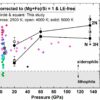More than 70 million tons of carbon were prevented from being released into the atmosphere under a deforestation emissions reduction scheme in Indonesia—but researchers point out this is only 3 percent of the total required by Indonesia’s Nationally Defined Contribution (NDC) under the Paris Agreement.
Indonesia is home to the world’s third largest span of tropical rainforest and is one of the largest greenhouse gas emitters—from 2000-2016 it was responsible for around a quarter of global emissions from deforestation, forest degradation, peatland decomposition and fires.
In 2011 Norway began a partnership with Indonesia to reduce carbon emissions from deforestation through a moratorium on granting new licences for palm oil, logging and timber concessions.
The partnership, part of the international framework for Reducing Emissions from Deforestation and Forest Degradation (REDD+) established at COP13, saw Norway pledge $1billion to Indonesia as a performance based payment for carbon emissions reductions in the forestry sector. Under the REDD+ approach Norway committed to pay $5 per ton of carbon if the forest-rich tropical country reduced its emissions from deforestation.
The study, by a group of researchers including Professor Ben Groom, Dragon Capital Chair in Biodiversity Economics at the University of Exeter Business School, analyzed the effectiveness of the scheme, and asked whether Norway received good carbon value for its money.
The researchers compared satellite data from 2004-2018 on forest cover inside the moratorium area, initially spanning 69 million hectares of forest land, with a control area outside the moratorium.
They divided forest cover throughout Indonesia into 400,000 grid squares and then matched grid squares inside and outside the moratorium area, ensuring they were comparing similar areas of forested land. The impact was measured by comparing trends before and after the 2010 moratorium.
The researchers calculated that the moratorium had resulted in 67.8-86.9 million tons of carbon emissions reductions, with dryland forest inside the moratorium area having on average 0.65% higher forest cover compared with similar areas outside the moratorium.
But on peatlands, which are huge natural stores of carbon, the study found that the moratorium had zero effect.
The researchers said that while they found the scheme had been moderately successfully, the impact was “tiny” compared with the nationally determined contributions (NDCs) for carbon reduction set out in the Paris Agreement.
“Our estimates suggest a 3-4 percent annual contribution to Indonesia’s NDC of a 29% emissions reduction by 2030, which is only a small dent in Indonesia’s overall commitment,” said Professor Groom.
“This is a problem because in Indonesia around 65 percent of emissions are from forest areas so the forest sector is a very important place to stop emissions coming from if they’re going to meet their NDC commitments for the Paris Agreement.
“The scale of the finance needs to be much bigger for implementation to be effective.”
In 2019 Norway agreed to pay Indonesia $56.2 million for preventing the estimated emission of 11.23 million tons of carbon in 2017.
This estimate of performance used the average deforestation rates for the whole of Indonesia rather than just the moratorium area, so is not an accurate measure of whether the program was effective, said the researchers.
Using well-established policy impact methods to estimate carbon emissions reductions, the researchers calculated that over the period 2011-17 the moratorium was more effective than this calculation suggests, meaning that for $56m Norway effectively bought carbon emissions reductions at a rate of less than $1 per ton.
“We find that Norway should probably been paying a lot more because the impact starts much earlier, from 2013 we estimate some modest but statistically significant changes, yet the payment was only calculated for 2017, with no proper counterfactual.” said Professor Groom.
While the carbon pricing was a “good deal” for Norway and global emissions reductions, Professor Groom adds that the agreement, which ended in 2021, could be seen as unfair towards Indonesia.
“Norway is looking for ways to invest its wealth by investing in this global public good: carbon emissions reductions. In the end there should be more efforts like Norway’s in the world.
“However, the global benefits of mitigating climate change, which economists measure using the social cost of carbon, is far greater than the $5 per ton they were paying—the US government uses $50 per ton, New York State $125 per ton, many argue it is higher still– so while Norway got a good deal, and cost-effective carbon policy is important, it wasn’t necessarily fair from an Indonesian perspective not to get a greater share of the global benefits. Maybe perceptions of fairness were driving the failure in this otherwise positive bilateral arrangement”
“Carbon emissions reductions from Indonesia’s Moratorium on forest concessions are cost-effective yet contribute little to Paris pledges” was co-authored with Dr. Charles Palmer and Lorenzo Sileci both at the Department of Geography and the Environment at the London School of Economics and Political Science, and is published in the Proceedings of the National Academy of Sciences.
More information:
Carbon emissions reductions from Indonesia’s moratorium on forest concessions are cost-effective yet contribute little to Paris pledges, Proceedings of the National Academy of Sciences (2022). DOI: 10.1073/pnas.2102613119
Provided by
University of Exeter
Citation:
Forest emissions scheme makes ‘tiny’ contribution to Indonesia’s Paris targets (2022, January 24)



